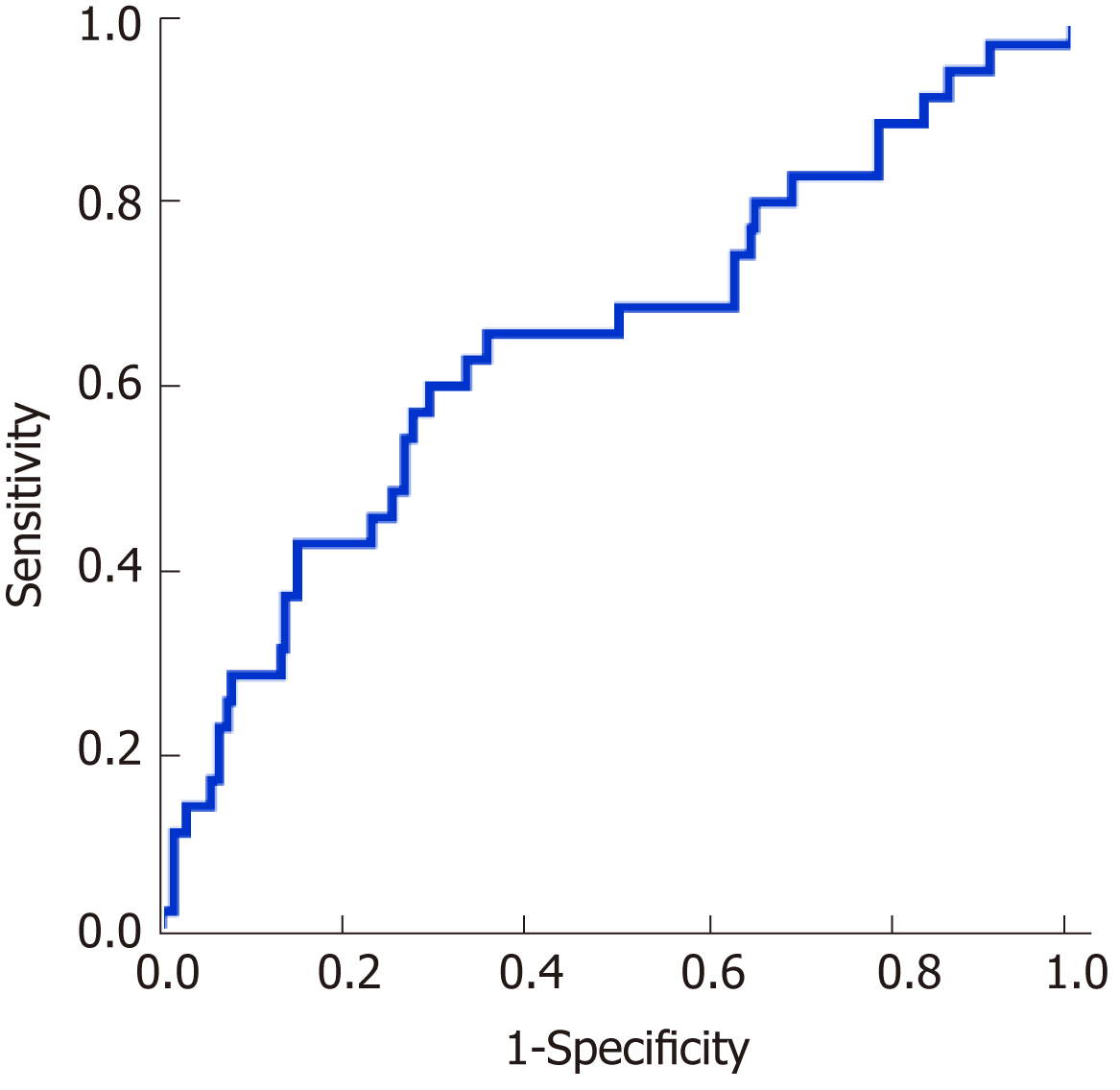Copyright
©The Author(s) 2019.
World J Gastroenterol. Apr 21, 2019; 25(15): 1879-1889
Published online Apr 21, 2019. doi: 10.3748/wjg.v25.i15.1879
Published online Apr 21, 2019. doi: 10.3748/wjg.v25.i15.1879
Figure 1 Determination of optimal albumin-bilirubin cut-off value by receiver operating characteristic analysis.
The calculated cut-off for albumin-bilirubin scores to predict postoperative survival was -1.48, according to an area under a receiver operating characteristic curve of 0.647 (P = 0.005).
Figure 2 Kaplan-Meier estimation of 3-year survival according to albumin-bilirubin grade.
Patients with a high albumin-bilirubin (ALBI) grade (> -1.48) had a significantly lower survival rate of 73.7% than patients with a low ALBI score (ALBI ≤ -1.48) of 87.6% (P < 0.05). ALBI: Albumin-bilirubin.
Figure 3 Kaplan-Meier estimation of 3-year survival according to model for end stage liver disease score.
A: The 3-year survival rates between patients with a model for end stage liver disease score ≥ 10 and < 10 were 81.3% and 84.9%, respectively (P > 0.05). B: There were no statistically significant differences in 3-year survival rates among patients with different Child-Pugh grades (P > 0.05). MELD: Model for end stage liver disease.
- Citation: Ma T, Li QS, Wang Y, Wang B, Wu Z, Lv Y, Wu RQ. Value of pretransplant albumin-bilirubin score in predicting outcomes after liver transplantation. World J Gastroenterol 2019; 25(15): 1879-1889
- URL: https://www.wjgnet.com/1007-9327/full/v25/i15/1879.htm
- DOI: https://dx.doi.org/10.3748/wjg.v25.i15.1879











